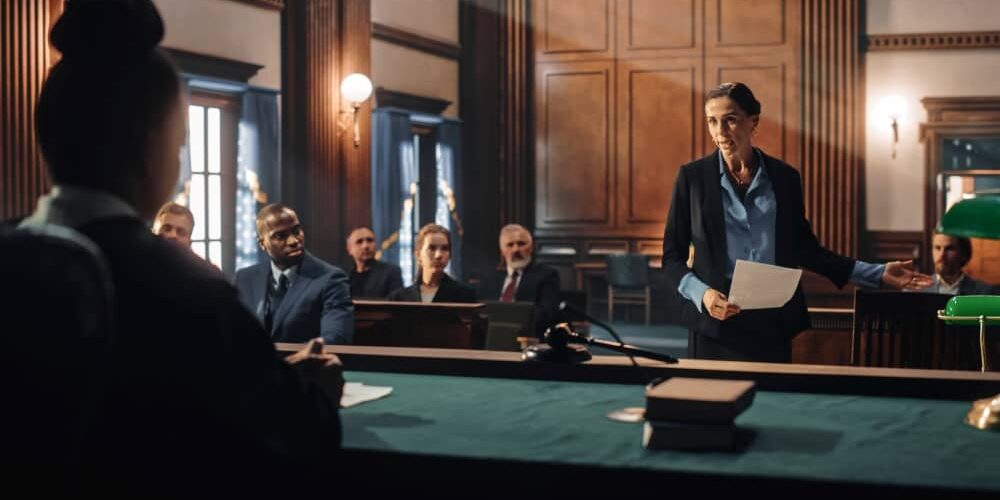Cross-examination is an essential skill every lawyer needs to be successful. It is a vital method to extract the truth or place reasonable doubt in a case. Contrary to what many believe, attacking the enemy is not a goal of cross-examination.
Although it is a critical method used in court, not all lawyers are skilled at it. Cross-examination entered into the courts in the sixteenth century shortly after the practice of using oral testimony as evidence became commonplace. Since then, many have tried to find the “perfect way” to try to cross-examine a witness. Here is a synopsis of how to master the art of cross-examination.
Is the Question Necessary?
Is it serve to harass or annoy another? Do you know the answer to the question asked? Do you have direct and admissible evidence to support the answer to the question asked? Often lawyers are eager to fire questions at any witness.
In some cases, it is better not to ask the question. This is especially true if your questions will not accomplish much. If you insist on cross-examining a witness, you will impress the idea that this person and their testimony are of some consequence.
A jury will be more likely to see the witness as irrelevant if you let them go without questioning.
Determine Your Goals for Cross-examining Witnesses
It is common practice to only ask questions that you know the answer to, and you expect the witness to answer them honestly and truthfully. The cross-examiner should only ask questions that they know the answer to, and that serve a purpose. The purpose it serves must also be a tangible purpose about the case theory and applicable laws you are asking the Court or jury to consider. In some cases, using cross-examination to explore a witness’ ability to recall an event, or to explore a certain matter may be relevant or necessary. However, an experienced cross-examiner will know that this method of cross-examination is fraught with risk and that it can only be used sparingly, and strategically.
As you plan your questions, it may be necessary to consider your approach towards a particular witness to achieve your desired outcome.
When cross-examining a witness, you should:
- Delineate the information that may strengthen your case.
- Dispute the authenticity and truthfulness of the testimony.
- Consider the version of events that you must put forth to the witness for them to “explain themselves”- Brown v Dunn rule
- Consider and explore the inconsistency in evidence.
Prepare a Plan for Cross-examination
Having a word-for-word script of what you wish to ask a witness may not be a desirable way of cross-examining a witness. A word-for-word script encourages the cross-examiner to follow a theoretical understanding of a case and it may discourage the cross-examiner to listen to what a witness is saying and following up on a lead. In some instances, a blatant disregard for the answer given by the witness can stifle further opportunities to establish a meaningful rapport with the witness, and it can affect the remainder of the questions a cross-examiner may wish to ask.
Maintain Continuity
Once you begin a point, see it through in an organised fashion. If you jump from point A to point B and back again, you risk confusing the jury and potentially appearing scattered and disorganised.
Tie as many points together as you can and make a clear path for the jury to follow as you make your points. However, in some instances, it is important to address the “elephant” in the room first before going into the smaller and finer details.
Be Brief and Very Specific With Cross-examination
You want to maintain control as you cross-examine them. A lengthy, seemingly pointless cross-examination is not desirable unless it is necessary. The longer a cross-examination is, the less impact it has on the jury. Break complex questions and ideas into their simplest form to make understanding them as easy as possible. This leaves less room for any spontaneous answers that could catch you off guard. The cleaner your questions, the easier it is to control a witness.
Avoid Open-ended Questions Unless It Does Not Matter Whatsoever
If the witness can answer anything besides yes or no, it is an open-ended question. These questions put you in the uncomfortable position of not knowing how the witness will respond. The only exception is if the question compels the witness to make a direct statement. For example, “Where was the knife when you first saw it?” The witness must respond with the location of the knife. So, while the question is open-ended, there is a clear direction.
Use Leading Questions
Never ask a question if you are unsure how the witness will answer. Leading questions during cross-examination are permissible because they bring out the truth. These questions often have yes or no answers. For example, “When you went in the house, did you see the child on the chair?” “Was the house cluttered and full of garbage?”
Know When to Stop
If you have already discredited the witness, continuing to discredit them will do more harm than good.
Four Ways to Discredit a Witness
1. Consider the Reliability of the Witness
Even though a witness may be telling their version of the truth, they can still be shown as unreliable. If a witness gets several details in the case wrong, which are not necessarily crucial information. You can use this to demonstrate the possibility of other inconsistencies. For example, if the witness gets the colour of a car wrong, calling it black when it was red, you can expand on this miscue and erode reliability.
2. Consider the Witness’ Ability to Perceive and Enunciate
When a truthful witness with no reason to fabricate facts is on the stand, your best attack is to question their reliability. Were they able to see from their location? Were there obstructions in the way?
3. Consider the Truthfulness of a Witness
Use this method to point out witness testimony inconsistencies. However, remember not to harp on every tiny mistake that is of no consequence. Doing so makes your case look weak.
4. Consider All the Evidence That You Have That is Admissible and How It Can Be Used to Your Benefit
If you have direct evidence and corroborative evidence that are admissible, you must consider this evidence and how to utilise them to depose a witness.
Your Conduct During Cross-examination
Remember, even though the courtroom is a theatre, exaggerated emotions will not impress a jury. Keep your demeanour calm and ask your questions firmly but not in a threatening way. Avoid arguing with a witness, and should you feel like you are losing your cool, try using the backup questions you prepared in your outline. Always look the witness in the eye and listen carefully for contradictions.
If you or someone you care about is in legal trouble, seek legal counsel immediately. The expert team at WN Legal are skilled professionals who can present the facts of the case to a jury and get you the best possible outcome. Be sure to ask about our free 30-minute consultation. We can review your case, and you can feel free to ask us questions. We have helped hundreds of people and can help you as well.
**Please Note**
The material presented in this post is for informational use only. It does not constitute binding legal advice and should not be a replacement for a consultation with a legal professional








